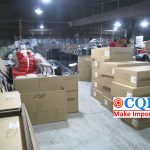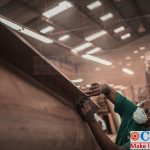How To Objectively Evaluate Vietnam Manufacturing Industry
In recent years, “whether Vietnam and India will become a strong competitor of Made in China” has been discussed on the internet of China. I have happened to be managing a factory in Vietnam for the past two years, and got some front-line experience, so I will share some of my analysis of the advantages and disadvantages of Vietnamese manufacturing industry with you. However, personal observation is limited, only for your reference and discussion.
The project was done in mainland China for more than ten years before, and then most of it was transferred to Ho Chi Minh Industrial Park in Vietnam. My previous job was to manage the factory operations in mainland China, and for the Vietnam project I only occasionally did training and consulting, and the company hired local employees in Vietnam to form a management team.
After that, Trump’s tariffs on Made in China directly accelerated the trend of product transfer to Vietnam – Trump is definitely one of the culprits of this wave of industrial transfer.The 25% tariff is frightening, and many trade conditions are still DDP (Delivered Duty Paid, after tax delivery), being forced to no way but to choose to Vietnam,”Made in VN” label can preserve a lot of profits, there is only one option to transfer.
The company simultaneously made a radical change by laying off the local Vietnamese commercial team, after which a Chinese manager took over. It is usually thought that local managers and teams have the best communication, but after 3 years, the company management did not approve of their performance.
Vietnam Manufacturing does have a lot of problems
First of all, the supply chain is a big problem.
Not afraid of getting ridiculed, at the beginning actually labels carton boxes were all imported from China, and sometimes even shipping costs were more expensive than the value of the goods. However, the business investment is flexible. There is no supplier at first, and once there is a steady demand from local businesses, there must be a company that invests to meet that demand. It’s as simple as that.
Of course, it takes time. The factory system is large and complex, and the training of personnel takes a lot of time, but this system can be set up with enough time and money.Sure enough after most of the year, at least 80% of the packaging materials achieved localization, not least of which was the new foreign-owned factories in Vietnam to take over the production.

Second, the talent is not mature enough.
The establishment of the Vietnamese factory system is not as good as mainland China. This is basically not comparable, at least for now.Mainland engineers, a large number of 10 to 20 years of experience ; while the Vietnamese factories, engineers are mostly just a few years out of college.
How long has Vietnam been open? There are simply not that many ready-made professionals, where as in a mainland city how many thousands of mature talent, any positions are available; Vietnamese employees also need to start training from the most basic skills.
And most of them are not good at speaking English clearly, but catching a few main words is understandable, some employees writing English also need to be translated into an understandable version. They will arrange people with better English skills to do the interface to ensure that the daily communication is basically smooth. There are a large number of foreign engineers and business managers in management, and local managers make up a small percentage.
In Vietnam, with a university degree and also English, once you get to a foreign factory to study for a few years professional experience, you can immediately find a good job. Over time, I believe that local talents will gradually be mature, which is an inevitable trend.
In terms of collaboration with the Vietnamese team, some netizens suggest that the Vietnamese are not as smart as the Chinese, which will ultimately affect the success or failure of the project.
Chinese people are indeed smart and capable, while the Vietnamese are indeed significantly worse in terms of dexterity, learning ability, and weak communication skills, and the same project for the Vietnamese to do will often encounter new problems that are never heard of in China.
Doing management communication with the Vietnamese team is basically a headache for every client. It is also a dead-end grind for more than half a year before there are obvious results. During this period, we had to give them professional examples to gradually gain trust, to do a lot of detailed case and process training, and now we also meet every day to keep a close eye on the key products over again. In contrast, Chinese projects simply do not need such detailed management.
There is also a cultural difference, that is, if something goes wrong in China, most of them choose to honestly face the mistake, frankly review the matter; while the culture of Vietnam is not to report bad news, they may try to cover up, put a smoke screen, or just stay silent not to admit. In China it takes 2-3 weeks to figure things out whereas in Vietnam it may take 2 months to come to light. More patience and reassurance in management is very necessary. For example, they will be encouraged to make mistakes, mistakes are opportunities to improve.
Cost advantage
The core of the large number of foreign companies accepting to move to Vietnam is the cheapness. Mainland China has excellent infrastructure, a complete and efficient supply chain, and a large number of hard-working and talented professionals, but none of this can outweigh the word cheap.
The cost data is just out there. The same circuit board equipment plus labor costs, the first round of similar factories quoted by Vietnam was cheaper 60% than that of the mainland, the Vietnamese factory is still a first-class old factory, long supply of large customers in Europe and the United States. The current comprehensive cost of labor in mainland China is more than two times that of Vietnam, which of course “thanks to” 20 years of housing prices have risen sharply. It can be said that the cost of China and Vietnam has not been in a level.
Many people often take the strength of the matter, but the strength can be cultivated. Now the production process, the degree of automation is very high, more than 80% is already program control. For example, testing, just put the module on the machine, click the mouse, go down according to the automatic procedure, and take it out after testing. The complex assembly part, repeat the exercise 1000 times in a week must also be familiar with, although Chinese workers may only need 100 times. This is just a difference in the length of the learning curve, not a huge difference in whether you will or will not.
In other words, Made in Vietnam is indeed a direct competition for Made in China, especially for the middle and low-end products, which account for 80% of all the company’s products.
To grow, companies must continue to look for the optimal solution of cost composition. At the moment, the transfer of a large number of manufacturing industries is almost a foregone conclusion.
The relocation of large factories is a huge project, need to consider the next at least 10 years of planning, so foreign enterprises will mostly not move from Shanghai to Chengdu and so on, because the regional cost difference is more limited. To remote cities and no good integrated system support, especially to consider the export of high tariffs in the United States, so still leave the mainland.
However, Vietnam labor is indeed cheap, the corresponding customer management costs will be much higher. A very good factory does not need customer involvement, they can solve 99% of the problems themselves; while a backward factory, every day there are problems needing help from customers, and will repeat mistakes, make mistakes in different ways.
In order to control costs, the company basically does not recruit new people, which means that everyone will be a lot busier and have a lot of problems- cost reduction is never for nothing. As for what they can’t do for the time being, it’s useless to rely on pressure. It’s better to work slowly at their pace and in their way, and encourage them more if they do well, while letting them see the logic behind the rules and the reasoning behind the standards they adhere to, so that the following progress is very obvious.
Meritocracy
Vietnam has an advantage that China does not have, and that is that it has full meritocracy due to its small size.
Small size is usually considered a disadvantage, but it becomes an advantage in the face of a large number of foreign candidates. This is determined by supply and demand.
For example, in Ho Chi Minh District 9 Industrial Park, the place is so small, assuming that there are 300 enterprises with capacity, and there are 1000 candidates, what should we do? The best companies must come in. How many dollars of registered capital? What is the competitive position of the industry? How much sales in previous years? How much export volume is expected in Vietnam? The small volume must be strictly screened, and only the top of the industry can come in.
Even if the third or fourth-rate companies can occasionally mix in, they can not survive well, can not provide a sound management system and competitive salary, so the talent immediately flow to competitive companies. The speed of attrition and decay can really be calculated by “days”.
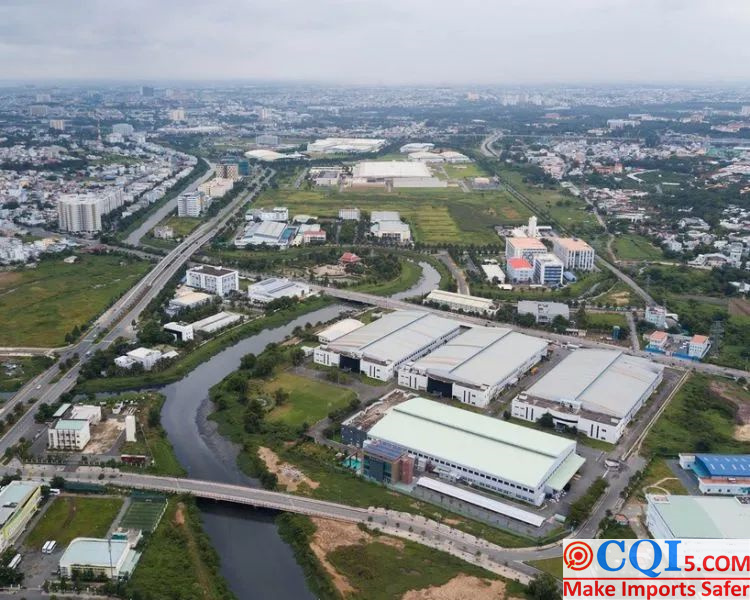
There are indeed examples of projects that have failed in Vietnam. Especially some very complex and sophisticated product projects require a large number of senior engineers and smart operators, as well as senior managers who are good at communication and coordination. These projects failed in Vietnam factories, and then returned to mainland China. There is a reason for this: time.
For example, in Vietnam to do the project, it takes 18 months to fully get mature, but the customer can not wait , most of the half year the goods can not be shipped, the customer order is to be dragged to death, only to come back to the previous partners in mainland China.
These are often not what big projects, limited resources certainly can not afford to drag; if can,it will certainly continue to invest in persistence, otherwise you engage in half away,who will you be” making wedding clothes for”?
In fact, this stage is still the pioneering period, small projects, small companies should not go to the hustle and bustle, unless there is a special industry technical advantage, it is impossible to survive. Large companies invest in long-term planning and development, strong resources to do decades of planning, how many billions of dollars are put down for the slow development.
Vietnam for export-oriented enterprises, many rules are quite rigid, for example the final treatment of materials can not be used will actually charge a penalty according to the number of days of storage (loss of material money, to pay a fine, and VAT and so on), but the overall is very encouraging business development, but also more cooperative, the situation is generally stable.
Vietnam has a high proportion of young people who are also happy to work in MNC factories, and the average age of local employees is less than 30, so I believe they can take advantage of this opportunity to develop the economy vigorously. At present, this development trend is unstoppable, as long as Vietnam itself grasps it.
Management of local employees
There is a public opinion on the internet that Vietnamese employees are not well managed, they refuse to work overtime to meet deadlines, and they go on strike and confront the company at every turn, and even an example from a Taiwan factory was shown.
I hope we can look at this objectively, it is not a common phenomenon. Strikes are like chemical reactions, which require certain conditions, and the management style of the company is the key factor.
We have experienced such incidents in China in the past. At that time, the factory changed the way of calculating the overtime pay, and the employees felt that it was not cost-effective, so they posted the slogan “Return the hard-earned money! ” slogan. At that stage, I remember at least 3 times of not going to work, and there were even slogans written in the bathroom. Does this mean that Chinese workers are difficult to manage? Of course not.
The project has been operating in Vietnam for five years, and there has never been a strike in the two years since we took over the project, and there has never been any delay in delivery because we couldn’t find overtime, except for the special Chinese New Year. The project has thousands of people and hundreds of orders every month, the spread is definitely not small and it is considered to be quite representative.
Humanized management is important. Respect for the individual, and the individual is not just an element of the production process. He/she has a family, a life and emotions.
Previously in China from time to time I heard such management rhetoric: regardless of the individual’s reasons, the work has to be done first anyway. My view is opposite: take care of personal matters first, and only then focus on the work.
Of course there is a huge amount of trust involved. The Vietnamese employees on the team are young, energetic, hard-working and highly committed to their work. They deserve trust and respect.
For example, during the Chinese New Year in Vietnam, the employees have to go back home, much like the Spring Festival on the mainland. Employees spend hours on the road, planes for buses then tricycles or even horse-drawn carriages in the countryside, just to get home for the reunion, which happens once a year and the vacation lasts about 10 days. During this special holiday season, orders are no longer urgent, and there is no requirement to rush back to work overtime. Vietnam has very few public holidays, only a few days a year, much less than in China, they can not easily go home, it is worthwhile to enjoy the rare reunion.
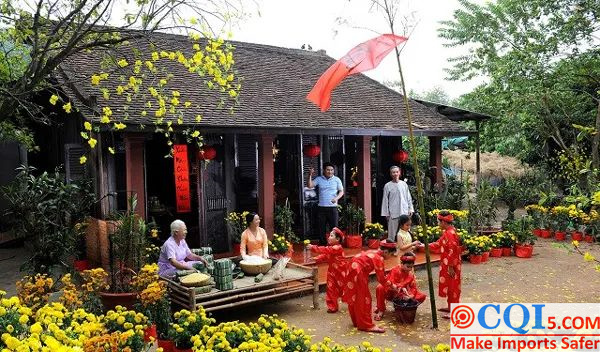
The Vietnamese team is mostly the young in their 20s who like to have fun. They will tell that they will not come to work next Monday, everyone is going out to play, a rare group activity about once every six months. As for the leave, it is quick to agree, and wish them a good time!
They worked overtime at night and did not ask for overtime pay, the production line arranged for them to go out and play, which was also to get by. Sending emails to them on the weekend ,they would reply in time, how could not wish them a good day.
Once suddenly in the morning a core staff with leave, saying that there was an emergency at home (back home in the field, need 5 hours), to leave immediately. The girl is usually big-hearted, so I worried that she panicked on the road accident. So I immediately told her that if there was an emergency at home, you could go at any time, pay attention to the safety of personal property along the way; ask her to stay calm, and then a big problem can be solved.
The email was written from the heart: Your family should always come first,everything else is secondary. After she went home, she insisted on reading the emails at night and attended the regular meeting remotely the next day. It was quite touching.
Similar small things slowly stacked up, the teamwork gradually became very harmonious, getting responses to everything, and sometimes far beyond the expectations. Now I enjoy working with them more than I could have imagined when I took over the project.
When we first started working together, the atmosphere and ethos of the team was not at all what it is now. At that time, there were hidden conflicts and confrontations, and every day was a difficult time for the factory and the customer. For example, the production planning department went through 7 rounds of employee resignations during 3 years due to unbearable pressure, and the customer interface staff had to adapt to 7 rounds and repeatedly provide training. This happened before we took over, and the last two years or so the key workforce has been stable.
SVP (Senior Vice President) also involved before, he also said there was no way to give instructions they did not listen to, many employees felt the pressure to resign. Once I attended his meeting, which was pulling two hours completely inefficiently, dragging at least a dozen core staff – with the big boss the meeting was highly nervous, after that there was no time and energy to do other things.
It can be seen, to drag the team, the most effective way is to open a few hours of management meetings every day. Core employees focus on how to deliver to cope with the meeting, how to perform without making a fool of themselves, if there is really no way to resign and run away.
Tell the team that the regular meeting will aim to end in about 40 minutes, prepare the information in advance, and communicate and arrange clearly in time. This is quite appropriate for a medium-sized project of several hundred million. Young people like efficient and sharp way, they cooperate very well, the general situation of the staff is stable, the business is becoming more and more familiar, the meeting atmosphere actually becomes relaxed.
For the outstanding employees, repeatedly and publicly praise, urge the project team to pay bonuses and provide promotion opportunities whenever possible. The group has a very good Vietnamese staff,I told their manager: “I bet if you find another 200 people ,they are not as good as him, and you will be better off with him here,talent must be retained with heavy rewards”.
Instead of saying whether the staff is good management, it depends on how you do management. After all, human nature is connected, human nature will choose the relative feeling of the most worthy and pleasant partner for a long time.
As far as I know, there are more peculiar rules in Taiwan factories, some even anti-human, such as the ban on chatting, resulting in a depressing work atmosphere, indifferent or even cold employee relations, and people going to and from work every day are like a machine, with no way out. What is the point of such a life? Why only Foxconn has a series of jumping tragedies, and other large factories do not have it? Maybe it’s not a coincidence.Rules and regulations are polite and courteous, daily affairs have humane care, give enough attention to talent and value respect, which is what managers should do. These aspects are smoothed out, staff management is not a problem.
Under the epidemic
Outside of Vietnam, India is also a popular relocation option. At the moment, the company has no product manufacturing projects in India. The company was worried that the security there was too chaotic and could easily get out of control, and that the Indian people had many ideas and many social and religious rules (such as the caste system) that were not easy to manage. In hindsight, this was an extremely wise decision.
The recent rapid deterioration of the epidemic in India has led to a dilemma for many Indian factories: if production is stopped, the loss will be heavy and will cause serious social problems: if continue to gather people to produce, there is not enough medical conditions, the virus infection will only be more serious. It is clear that behind the stable and orderly factory, a solid public management system is needed to back it up.
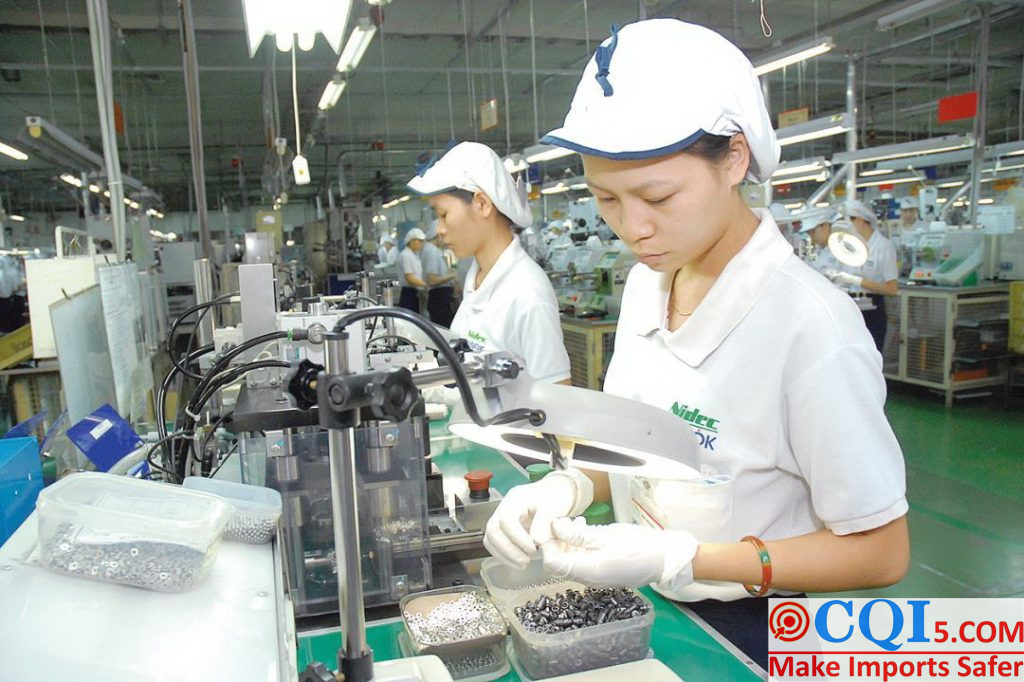
At present, we are using Indian IT services, all of which are remote communication assistance. Although it is not as good as local staff, it is fully usable after mutual adaptation, and the shortcomings can be overcome if the customer puts up with them. The key is the cost savings of more than a large part – this is the core factor in management decisions. Companies that are not bad off are, after all, are a very small minority.
Compared with India, the overall control of the epidemic in Vietnam is very good, the government and enterprises are very concerned about it, and the people are actively cooperating. There was not a single case of infection found in the factory with thousands of people, and the production schedule remained normal. There are not many factories like this in Vietnam.
The foundation of Vietnamese manufacturing has been stable, bringing together engineers and managers from all over the world, and local talents have a benign learning and growth environment, the state of this industry is quite similar to China more than 20 years ago.
Vietnam Manufacturing Need to Face the reality and continue to expand
We hope that you can have a more objective understanding of Vietnam’s economic development, especially the development of manufacturing industry.
The manufacturing industry is a national treasure and needs to retain quality customers from around the world, not only for employment and tax revenue, but also for the sharing of technology and management experience, which helps to maintain the advanced nature of business operations and sensitivity to the global market.
Years ago Motorola, Nokia, Ericsson, Apple and other companies entered China, and although some products would decline over time, they eventually contributed to the formation of a strong and mature cell phone supply chain in China, solidifying the industrial foundation for the subsequent rise of Chinese cell phone brands. Today’s Tesla actually has a similar guiding role in Shanghai, fostering a complete supply chain for new energy vehicles.
Industrial products also have a lot of similar role. 20 years ago, many functional modules of mobile communication base stations are developed and manufactured by foreign enterprises, such as RF module when the unit price of more than 20,000 are in short supply, now more than 2,000 are considered expensive. China’s supply chain is developing so fast that local suppliers eventually take over foreign factories. Now stands the world’s most famous Huawei technology, the root of its manufacturing is China’s local efficient and strong supply chain.
Vietnam is a small area, small volume, the overall weak industrial base, the supply chain is not as perfect as China, but they simply do not need to engage in a large and comprehensive system, just integrate resources for the world’s top quality customer service can be, no local channels from China to import nearby, such as profit prospects can be considered to do localization.
The relocation of manufacturing operations from China is happening, and there will be a significant delay in the process of transfer due to epidemic factors, but the general trend will not change.
There is a need to increase R&D and investment in automated production lines to significantly reduce labor consumption and continuously improve management efficiency, thus effectively reducing total costs. The odds are that this will not bring back evacuated business, but it will effectively improve the competitiveness of existing manufacturing companies and keep business in China for as long as possible.
Advanced experience is often shared through talent mobility and industry exchanges. It is important to learn advanced design and technology as well as management methods from world-class quality customers. Even if some manufacturing projects move out of China, the qualifications certified by previous customers are still valid and suppliers should actively seek continued participation. Manufacturers that have not yet been certified by their customers, if they have sufficient professional competitiveness, are fully capable of seeking customer certification, even if this requires a long development cycle.
If Chinese factories lose certain business opportunities in finished product manufacturing, there are still great opportunities to continue to supply parts and materials and actively follow up on the expansion of certification for new projects. In the new situation, Chinese supply chain manufacturers need to follow the trend, adapt to the new industrial positioning, and continue to play a huge role and influence in the global manufacturing industry.
Disclaimer:
CQI5 article information from the Internet and contributions, the copyright of which belongs to the original author, and only represents the views of the original author. This website is only responsible for sorting out, typesetting and editing the articles, reproduced for the purpose of spreading more information, does not imply that it endorses its views or proves the truthfulness, completeness and accuracy of its content, and therefore does not assume any legal responsibility.
The information contained in this article is for reference only and is not intended as direct advice for decision-making.
If we inadvertently violate your copyright, please inform us, after verification, we will immediately correct or delete the content according to the requirements of the copyright holder, thank you! Contact, email: copyright@cqipro.com
This website has the final right to interpret this statement.
Welcome to reprint, Please be sure to keep information complete.


